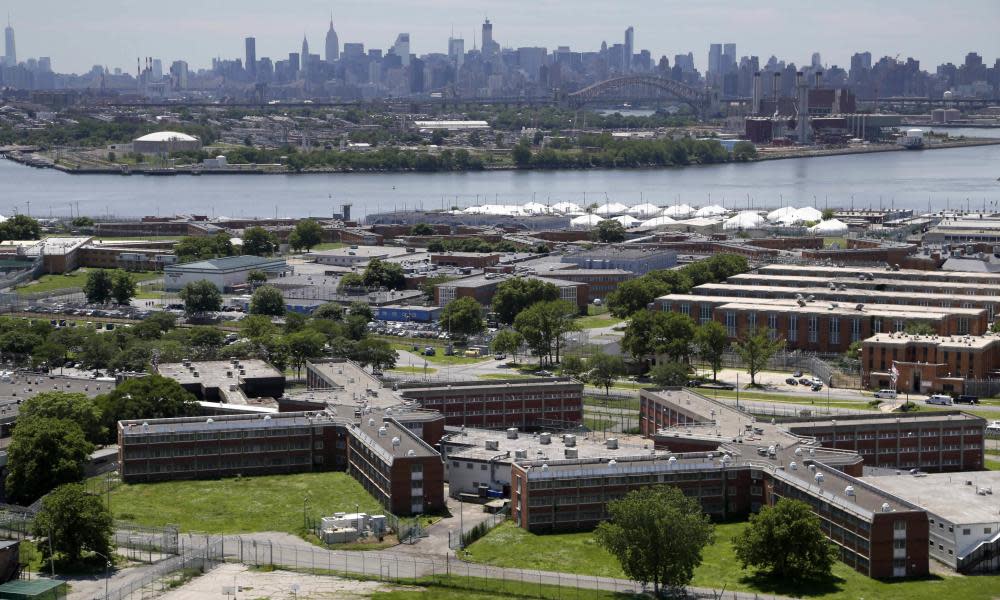New York votes to close notorious Rikers Island jail complex

New York City lawmakers voted to close the notorious Rikers Island jail complex, which has become synonymous with violence and neglect.
Rikers is scheduled to shutter by 2026, ending a decades-long run as one of the world’s largest jails. It will be replaced with four smaller and more modern jails located closer to the city’s main courthouses in Manhattan, Brooklyn, the Bronx and Queens.
“Rikers Island is a symbol of brutality and inhumanity and it is time for us to once and for all close Rikers Island,” said the city council speaker, Corey Johnson, a Democrat who shepherded the plan through the council. “As a city we must do everything we can to move away from the failed policies of mass incarceration.”
The New York City mayor, Bill de Blasio, and other Democrats support the plan, which has a price tag of more than $8bn.
“This is one of those moments where a cycle gets broken. There’s been a cycle of incarceration,” De Blasio said at a news conference after the vote. “That cycle ends now” he added.
The Rikers complex counts 10 jails on an island between Queens and the Bronx that mainly houses inmates awaiting trial. The complex has housed jail inmates since the 1930s and has long been known for brutality. It saw hundreds of stabbings each year during the 1980s and early 1990s. It has been nicknamed Gladiator School, Torture Island, the Guantánamo of New York and, in summertime, the Oven.
Related: 'Belly of the beast': former inmates hail New York plan to close Rikers Island jail
More recently, a 2014 Associated Press investigation detailed dozens of inmate deaths including that of a homeless ex-marine who essentially baked to death in a hot cell.
Daniel Dromm, a councilman, invoked the names of former inmates who have died at the facility. The most notorious case in the jail’s recent history involved the 16-year-old Kalief Browder, who spent three years at Rikers Island after being accused of stealing a small backpack. The charge was eventually dismissed. Browder was beaten by officers and inmates, as shown in disturbing footage from surveillance cameras, obtained by the New Yorker. He took his own life at age 22.
Dromm also recalled Layleen Polanco, a transgender woman who was found dead in her cell last June.
With falling crime rates, the number of people incarcerated in the city on a daily basis has declined from a high of nearly 22,000 in 1991 to about 7,000 today. City officials announced this week that they believe they can shrink the jail population even further by 2026, to just 3,300 prisoners.
Backers of the jail overhaul say they expect the city’s jail population will keep dropping because of criminal justice reforms.
Some critics of the plan say fewer cells may mean more violent criminals on city streets. Others say building new jails will inevitably lead to incarceration. Anti-jail activists chanted during the vote: “If you build it they will fill it.”
“The idea is to begin actually decarcerating New York City instead of building new jails” said Marlene Nava Ramos, a member of the advocacy group No New Jails NYC.

